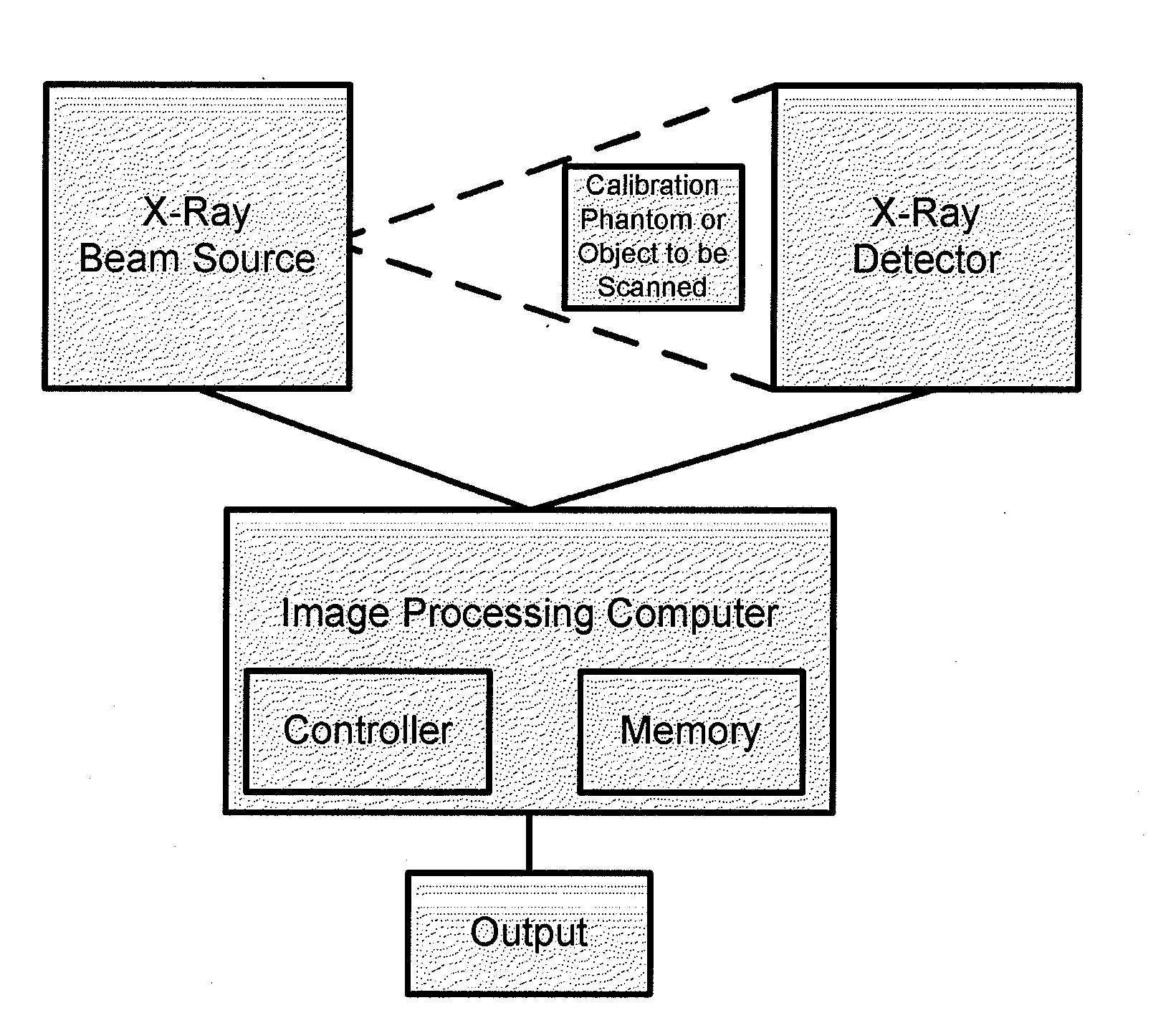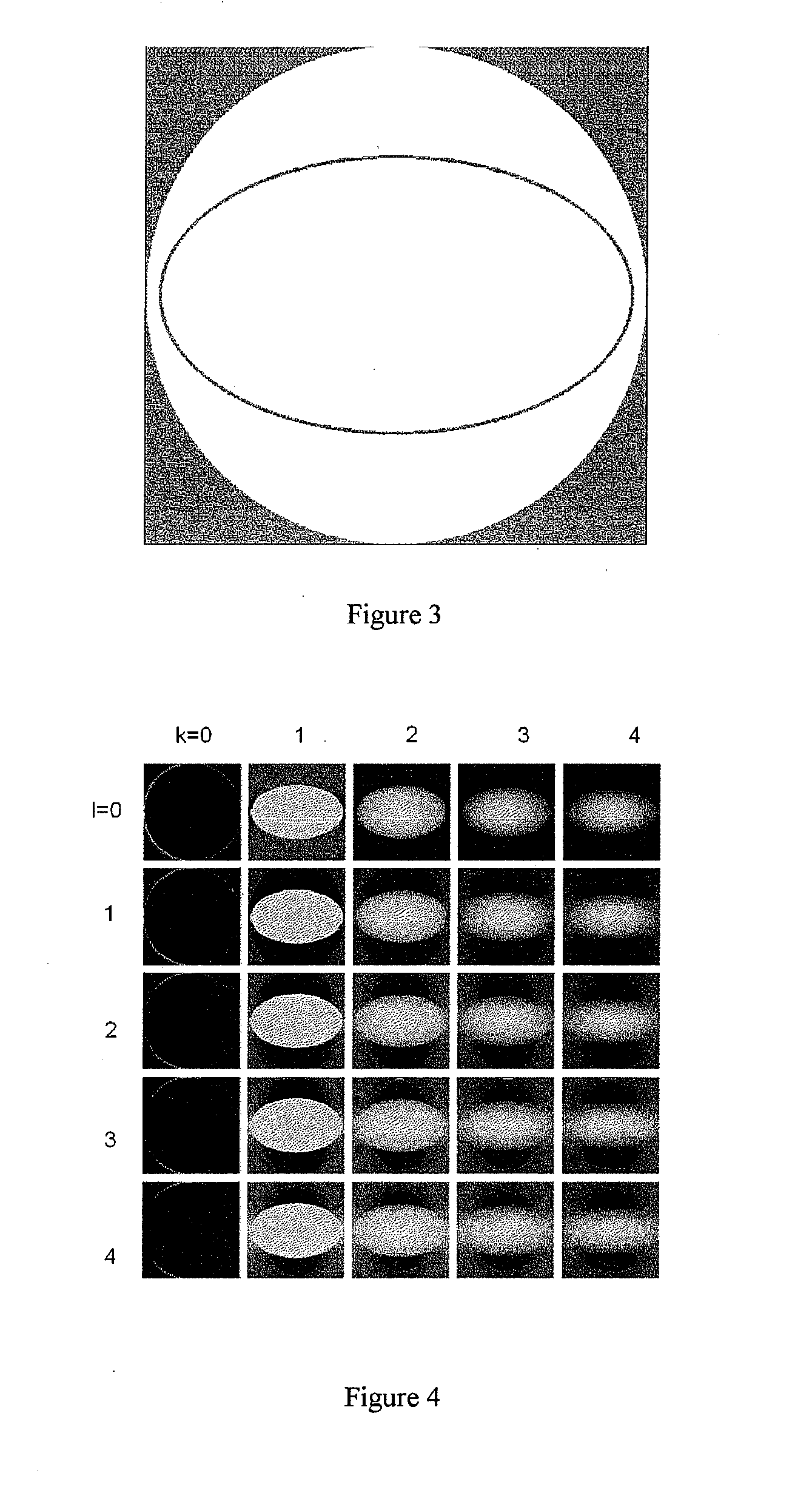Method and apparatus for empirical determination of a correction function for correcting beam hardening and stray beam effects in projection radiography and computed tomography
a beam and correction function technology, applied in the field of empirical determination of a correction function for correcting beam hardening and stray beam effects in projection radiography and computed tomography, can solve the problems of deteriorating signal-to-noise ratio, impairing quantitative precision and recognizability of low contrast, and preventing a homogeneous image impression. , the effect of decreasing gray levels
- Summary
- Abstract
- Description
- Claims
- Application Information
AI Technical Summary
Benefits of technology
Problems solved by technology
Method used
Image
Examples
Embodiment Construction
[0037]One problem with the state of the art in projected radiography and in computed tomography is the need to find an economical and fast-operating method for empirical correction of the beam hardening of polychromatic X-ray retardation spectra with different limit energies on a water-like object.
[0038]Embodiments disclosed herein apply a correction function that depends on the acceleration voltage of the X-ray tube for a projection image to the projection values qi formed from the logarithmic measured values of the intensity, and by obtaining the correction function from the projection images of the single scan with variable acceleration voltage on an object-like calibration phantom made from a water-equivalent material.
[0039]Certain embodiments of the invention will be described in detail based on the theoretical relationships below. Only the part of the theory that goes beyond derivation of the correction function for a polychromatic X-ray spectrum with a defined limit energy fr...
PUM
 Login to View More
Login to View More Abstract
Description
Claims
Application Information
 Login to View More
Login to View More - R&D
- Intellectual Property
- Life Sciences
- Materials
- Tech Scout
- Unparalleled Data Quality
- Higher Quality Content
- 60% Fewer Hallucinations
Browse by: Latest US Patents, China's latest patents, Technical Efficacy Thesaurus, Application Domain, Technology Topic, Popular Technical Reports.
© 2025 PatSnap. All rights reserved.Legal|Privacy policy|Modern Slavery Act Transparency Statement|Sitemap|About US| Contact US: help@patsnap.com



